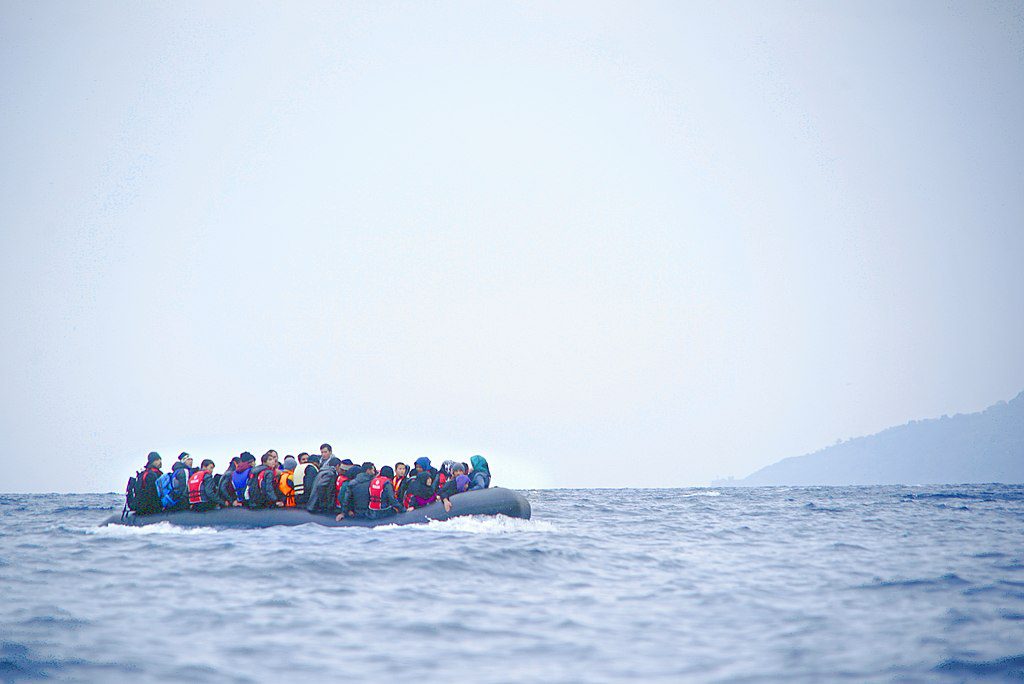
This year, December 24th marked both Christmas Eve and tragedy in the Aegean Sea. That Friday a migrant boat capsized, and 13 people died. It was the third accident involving migrants in Greek waters in less than a month, bringing the death toll of the three sinkings to 27, according to the Associated Press. Three suspected smugglers were also arrested.
While the three catastrophes made headlines, for those working in maritime services along precarious migratory routes, the occurrence is not exceptionally different from most days.
“We would get at least one call per shift from either an NGO, the Spanish Civil Guard, the Red Cross, another boat that had sighted a migrant boat–from a family member, from another country, or even from the very boat where the immigrants were,” said Juan, who worked in communications for the Spanish Coast Guard until last year. “In summer, when the meteorological conditions were better, the daily emergencies increased because that’s when the migrants had the boats and had the best chance of success.”
He worked in communications centers that coordinated rescues at sea, but preferred not to give his real name. He said NGOs such as Open Arms also rescue many migrants.
In most cases, he said, the migrants are rescued safe and sound but various circumstances can complicate the rescue. Sometimes the person calling in the emergency is not on board and doesn’t have the exact location of the boat, making it difficult for rescuers to find it. Other times, boats are adrift for days with no way to call for help and passengers suffer from dehydration and exposure. Bad weather can also cause a boat to sink.
The work of Frontex, the European border patrol, and the billions of euros given to governments on the Mediterranean’s non-European shores, specifically to fund migration prevention, have significantly lowered migrant arrivals by sea since the height of the crisis in the Mediterranean in 2015. But migrants keep coming by the tens of thousands, smugglers simply sending them off on longer or more dangerous routes.
The AP reports that smugglers in Turkey are increasingly sending boats to Italy instead of the closer, more heavily guarded Greek shores. In fact, as migration across the Mediterranean has decreased in recent years, the most dangerous routes, that through the Atlantic to Spain’s Canary Islands, have seen proportionally higher migrant traffic and it’s only getting more dangerous. Migrant deaths on the Atlantic route to the Canary Islands had reached 955 by the end of 2021, according to the International Organization on Migration, despite the Spanish government’s pledge to close the route.
Spain has become the principal port of migrant entry into Europe. In 2020, approximately 40,000 illegal immigrants made it to Spain, compared to 15,000 who entered Greece and 35,000 who entered Italy, La Razón reports, using data from the United Nations refugee agency. Half of those who entered Spain arrived at the Canary Islands in the Atlantic off the west coast of Africa, according to statistics from Spain’s Ministry of the Interior. The numbers are essentially the same for 2021, except for the higher number of migrant deaths at sea.
Arrivals to the Canary Islands spiked in 2020, particularly in October and November when a huge influx of migrants overwhelmed reception facilities, stoking fears the Grand Canary would become the new Lampadusa. In response, Spain gave Morocco another €30 million for the already well-funded cooperation with the African country in preventing illegal immigration. Nevertheless, arrivals to the Canary Islands have remained steady.
Neither the higher death rates nor the continued flow of immigrants from Africa surprises Juan. As a sailor, he knows personally how treacherous the Atlantic can be. He’s also certain that as long as poverty and violence push them from home and there are smugglers ready to take advantage of them, migrants will continue to reach for European shores. Presaging the continuation of a crisis on both sea and land, uninvited Afghan migrants are already appearing on Europe’s borders.
